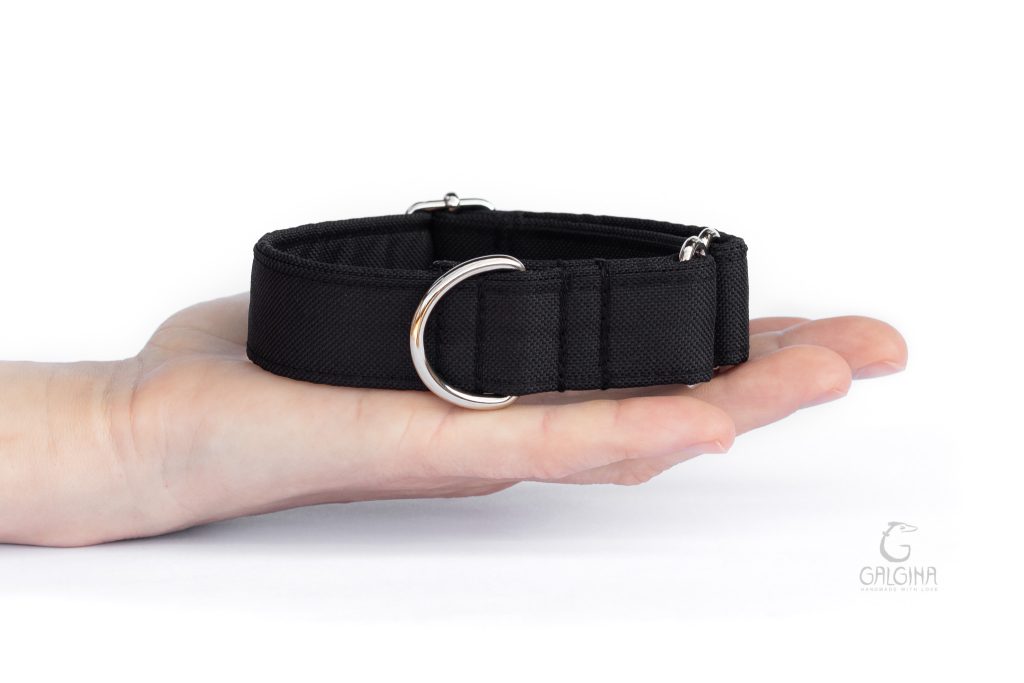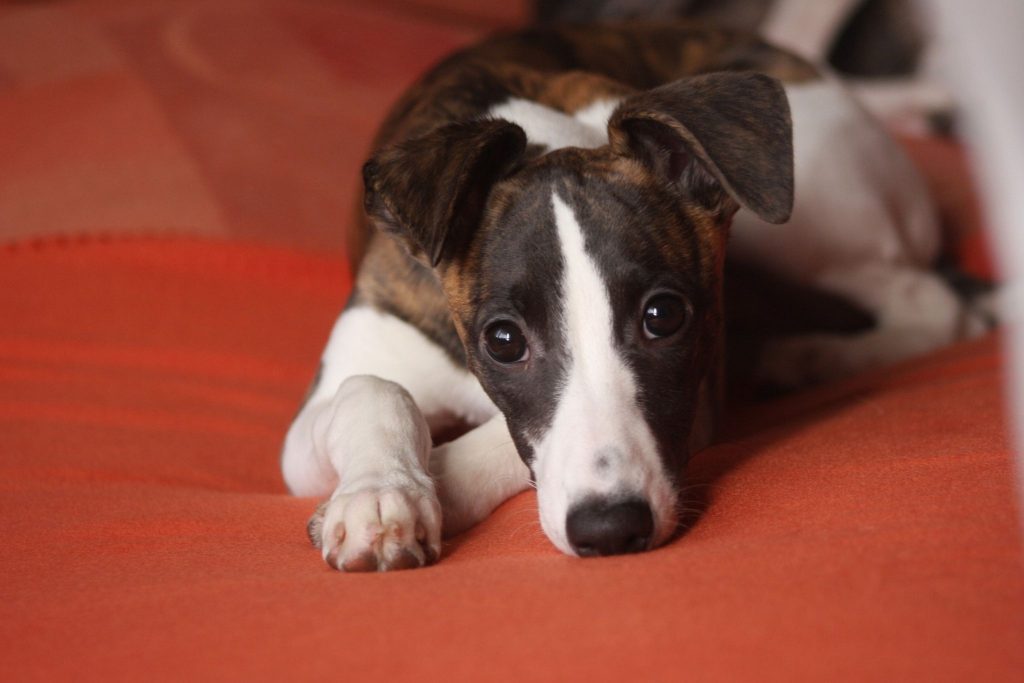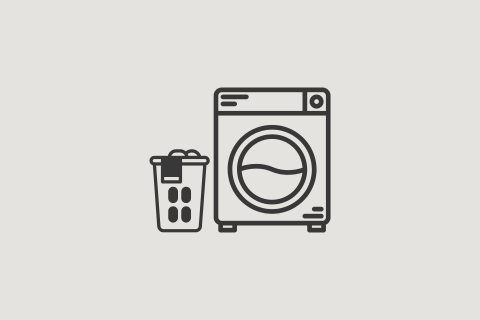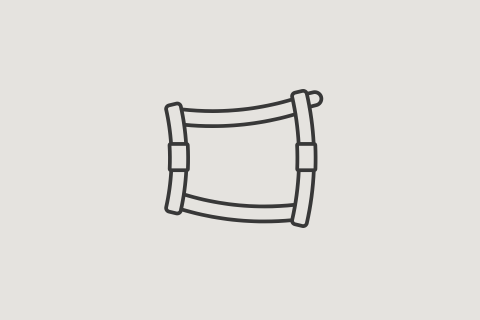Puppy’s first gear
In our work, we most often meet Whippet puppies and their owners, who are buying the equipment for them for the first time. Owners, understandably, want to be ready for the puppy before he/she arrives in a new home. They usually choose a collar and leash, but especially when it comes to the first dog, they feel a bit lost and don’t know how to make the best decision.
Collar
We have prepared a very simple collar intended primarily for Whippet puppies as well as Italian greyhounds. Ordering this collar does not require special information (such as measurements) so it is very easy to order.
We recommend the Puppy collar as the first collar the puppy will be wearing from 8 weeks of age onwards and will get used to the equipment, attaching to a leash, and will also take the first walks with it in the new home. The puppy collar is 2,5 cm wide and can be purchased in two sizes, one for Whippet puppies and the other for Italian greyhounds. You put it on and take it off over the puppy’s head, so the puppy gets used to this behavior early on, and you don’t have a problem with it if you switch to a martingale collar (or putting on clothes).

A martingale collar is not always the best choice for a first collar
The martingale collar has the ability to tighten, when a leash is pulled its circumference is reduced. This prevents from the collar slipping off in critical situations, but it also puts extra pressure on the neck. This is one of the main reasons why semi-tightening or tightening collars are not advised for the first collar.
For a puppy, the collar is something new and it’s important that his first experiences with it are positive. The puppy should be accustomed to wearing the collar slowly, so it’s worthwhile to use a simple, light collar that is comfortable to wear and at the same time wide enough for long sighthound necks.
A martingale collar would be too robust, too heavy for puppies, and because of a small adjustment range, they would grow out of it quite fast. Owners who do not yet fully master the handling of such equipment could also run into troubles and unpleasant situations. The martingale collar must be set correctly. A small puppy, who is not yet well accustomed to the gear, could even get stuck with his/her lower jaw or paw in the control loop of an oversized or too loose martingale collar or get stuck on various objects. It’s recommended and right that for the safety of your dog, the martingale collar (or all collars that have the ability to tighten) is used only under the owner’s supervision. Since puppies often need to go pee, it’s most useful that he/she can wear a collar for a long time and you don’t need to put it on and take it off for each walk as you’d need to do with a martingale.
A puppy who is not yet accustomed to walking on a loose leash could be unnecessarily constricted with a martingale collar too many times and too much (due to the puppy’s lightweight). For Whippets, we recommend switching to a martingale collar when they are already good at walking on a loose leash and are already well-developed physically, ie somewhere from the 5th or 6th month onwards. If for safety reasons, it’s necessary to use a martingale collar earlier, it can be made for dogs with a neck circumference of at least 20 cm. In the earlier period of growing up, we recommend a safe harness more than a martingale collar.
Collar for older pups and other sighthound breeds
When owners want to choose a wider collar but do not want to switch to a martingale collar, we recommend using the Non-tightening collar. This model is the same as the Puppy collar except they are made in custom fit as well as in other widths. For older Whippet puppies a 3,8 cm wide collar is the best choice. It is also practical for those who want a less massive collar, for dogs that don’t wiggle out of the collar, perhaps as jewelry, for wearing a tag, or as an addition to a harness.
For puppies of other breeds, it is possible to order a Non-tightening collar in a width of 2,5 cm, 3,8 cm, or 5 cm, depending on the breed and age of the puppy. For adopted dogs and dogs with an unknown past, a safety harness or martingale collar is advised early on.
Growing up and changing collars
In smaller breeds growth is most intense up to 6 months of age and in larger breeds up to 8 months of age. After this period of time, the growth slows down a bit and the puppies start to get more of an adult look. Changing collars during the growth phase is expected and normal, most dogs need at least 2-3 size changes before they reach the adult size. Exactly when puppies will stop growing and how much exactly will they gain in size during adolescence is impossible to predict as they can vary considerably.
Making collars in any wanted size range, which would be a good fit for a 2-month-old puppy, as well as for a dog in adulthood is unfortunately impossible. The smaller the collar, the smaller the range within which the size can be adjusted.
If you want to order a collar only when the probability that the puppy will outgrow it is low or insignificant, we advise you to place an order for whippets after 6.-8. months of age, for Galgos and greyhounds after 8.-10. months of age, and for other extremely large sighthounds at least after reaching at least 10-12 months of age.
Leash
Speaking of a leash, it’s a bit harder to advise an ideal choice, as it very much depends on the individual’s wishes, preferences, and needs.
For young Whippets, owners usually choose a 2 cm wide leash. The strength, durability, and weight of the leash do not depend excessively on the width of the strap, so there is no need to pay attention to this.
The width of the strap is more important for the owner as the straps of different widths fit our hands differently, and this is essential in order to keep control. In addition, some people prefer narrower leashes, while others like wider leashes that show more design, at least in some fabrics. The difference between both widths seems small at first, but the 2,5 cm flat leash is quite massive already. The 2 cm wide leashes usually fit small hands better and the 2,5 cm wide fit better into large hands.
The size of the snap hooks depends on the width of the leash. We sew smaller and lighter snap hooks on narrow leashes, these are more suitable for a growing puppy who is getting to know a leash for the first time. Smaller snap hooks are strong enough for small and medium-sized dogs. If preferred, large snap hooks can be sewn on a narrow leash for a large dog, but unfortunately, the other way around is not possible. For a wide leash, we have to use larger and slightly heavier snap hooks. The choice of designs is large in our offer, but due to the suitability and method of production, some are only possible on wider leashes.
Every leash has its pros and cons
The short leash is very easy to use, especially if you are not used to handling the canine equipment. It is the lightest, least massive and you can easily put it in your pocket (when you switch between different leashes or the puppy can be unleashed). Galgina’s Simple Leash is a classic 1,2 m long “school” leash and if you’ll take your puppy to a dog school, they will probably expect such a leash length from you there. The short leash is useful and suitable especially for walking in urban areas where there is more traffic expected and you want the puppy to be next to you at all times.
The guidelines of modern dog training suggest that the leash should be as long as possible for a better quality walk. Galgina’s 2 m long Multipurpose leash can be set to 3 different lengths and is therefore practical in several environments, including parks, on a walk in the woods, or in nature. The puppy can be about 2 meters away from you on the Multipurpose leash, which allows you to give him/her more freedom to explore, meet other dogs and not have to follow him/her into every mud puddle. With a lively puppy, the use of a Multipurpose leash requires a little more skill, but the owners get familiar with it quickly. The Multipurpose leash is also practical for fastening around a table, or a pole or you can also clip it over your shoulder. You have to be aware that the puppy will feel the weight of both snap hooks more when you use a leash at the shortest length of 1,2 m because that’s when the snap hooks are placed together close to the dog’s collar.
You will probably need leashes of different lengths in different situations depending on the purpose and usability. Owners eventually decide on their own favorite combination of different short and long leashes such as trailing leashes (8, 10, 15, or 30 m) or retractable leashes that also allow for a longer distance between the dog and his owner. We do not make these models of leashes.
Caution is also advised when using retractable leashes together with a martingale collar. Retractable leashes are taut most of the time, which causes the martingale collar to tighten, and this is not recommended unless when necessary. When you press the stop button of the retractable leash, you can suddenly tighten the leash, which the dog may not expect. Unnecessarily collar tightening will also put pressure on the dog’s neck.
I hope this blog answered the questions of all new Whippet owners. If you need individual advice on choosing the most suitable equipment, you can also contact us via e-mail at [email protected]






